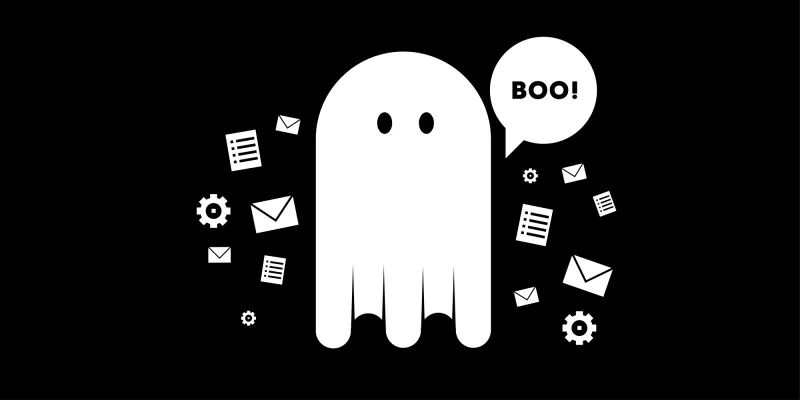


Beware! five project management horror stories

Digital Project Management is easy isn’t it? Well, not quite. Agency life has taught me you’ll have nightmares if you don’t pay heed to the horrors that so often spell disaster. I’ve picked out five of the scariest scenarios as well as some tactics and tools you can use to make sure your project doesn’t end up six feet under. So, read on if you dare…you have been warned!
“I’d like a new widget”
Requirements, requirements. All too often, a client will spring into life with a badly composed two-line email, requesting a new widget for their website. That’s all the detail you get. You spring into action, give the client a quick call and agree to start work straight away…. NO. You’ll end up making a loss, delivering the wrong widget and annoying your developers.
Clients need educating. You need some clear processes in place to ensure success. Meet face to face with the client or set up a GoToMeeting to tease out those requirements, with as many stakeholders as possible. Clients think they know what they want, but probably don’t know how it’s going to look and certainly don’t know how it will be implemented.
During that call, get those requirements nailed, discuss deadlines and budgets. Schedule time in as soon after the call with your team to agree an approach, estimate the work and document what’s been discussed.
We rely on our web-based suite of Atlassian tools (JIRA and Confluence) to log, document, collaborate and share everything with the client. That way all requests get logged, prioritised and tracked. The client provides sign-off before work commences, the UX, design and development teams get briefed and scheduled in, the client is onboard and gets the best widget they’ve ever seen!
It’s all kicking off
One-off requests are one thing, but if you’re dealing with a bigger piece of work that will likely take weeks or longer, you’ll seriously regret it later if you don’t get everyone round the table for a formal ‘kick-off meeting’. The kick-off gives you an opportunity to introduce the team, be clear about the objectives and desired outcomes and talk through the brief in as much detail as possible with the client. Everyone will then have more clarity about the scope of the project and your planned approach.Details are always sketchy at the outset, so we always make sure to break the project in 5 stages (Discovery, Definition, Design, Development, Delivery) with an evaluation/re-estimation stage-gate after Definition, by which time, we’ll have much greater clarity regarding requirements.
Launch into a project without a kick-off and you’ll end up having multiple follow-up calls, meetings and re-work to contend with.

Stand up!
It’s the start of a new day, a piece of work has been signed-off and you’ve managed to get the team scheduled in, so what next? Just let the guys get on with it? No way! You need a ‘stand-up’, or ‘daily scrum’. (The discomfort of standing for long periods is intended to keep the meetings to 10-15 mins)Every day, every morning, we get the whole team to down tools and in turn talk about what they achieved yesterday, what work is planned for today and any impediments that might block progress. Why?
- To track progress on a daily basis
- To root out issues early.
- To review and adjust priorities.
- To fill any gaps in the schedule.
Without a stand-up, the team will lose focus, burn time unnecessarily and have no awareness of activities going on around them.
Irritating inbox
Clients love email. We’ve all been using email for years, but it’s not a project manager’s friend. Let me tell you what happens if you do…An email comes in that’s been forwarded, containing notes jotted down from a meeting with some questions and actions on it. You reply ‘to all’ adding inline comments in red. Someone else replies to the original email with their comments, that exclude yours. Result, everyone spends an inordinate amount of time trying to decipher the scattered comments, it become impossible to pinpoint what’s been actioned, what questions remain and what, if any, decisions have been made. Everyone’s inbox gets fuller, you accidentally delete or lose the email and you’ve lost control.
Technology to the rescue! We log tasks as JIRA tickets, allowing each task to be detailed and assigned, with status and due date set, ready for review at the next stand-up. With a centralised record of all work open, in progress, or done, we now have control.
All change
Change is inevitable. There will always be a time during any project when a change becomes necessary or is raised out of the blue. Don’t grumble, have a process to deal with it.Most of our projects follow the waterfall methodology, with one piece of work being finalised before progressing to the next. However, the client will inevitably miss/forget details which leads to re-work. So, for example, get all screen designs signed-off before progressing with the build. Should a change then be necessary, additional time and budget can be agreed and any time-consuming disputes are avoided. Plough onto the build stage without sign-off and you’ll end up doing work for free!
So, to sum up: *deep breath* educate your clients to follow YOUR processes, get requirements agreed, involve the whole team from the outset, keep the team rolling with daily stand-ups and encourage less email and more collaboration, using some excellent web-based tools you'll soon come to rely on.
Do all that, and you’re guaranteed to keep those project horrors at bay.
Posted 19 October 2018 by Simon Mann